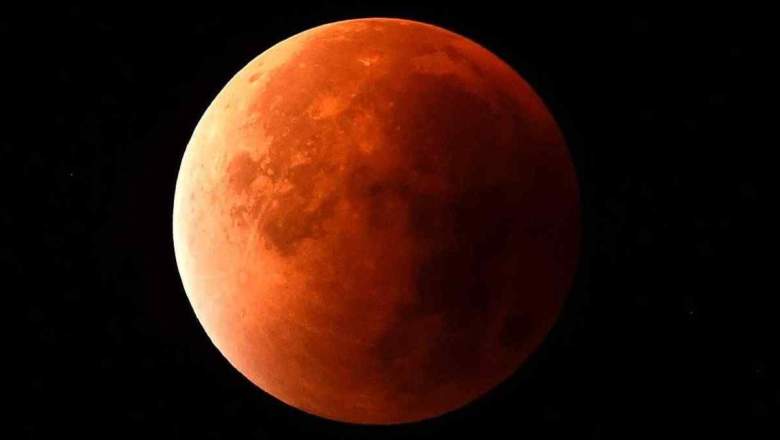
Tonight’s lunar eclipse is a rare event. Not only is this a supermoon that marks the moon’s closest orbit to the Earth, but it’s also a time when the moon appears red in the sky while passing through a total lunar eclipse. Although this won’t be visible to the entire United States, a good portion of the country will be able to see what is commonly referred to as the Super Flower Blood Moon.
Totality Takes Place Early in the Morning on Wednesday
The moment of greatest total lunar eclipse (also known as the totality) will take place for about 15 minutes on Wednesday, May 26, between 4:11 and 4:26 a.m. Pacific, according to NASA. (This translates to 5:11-5:26 a.m. Mountain, 6:11-6:26 a.m. Central, 7:11-7:26 a.m Eastern. It won’t be visible in every time zone, but you might also be interested in watching live online if you can.)
According to NASA, the totality “will be visible near moonset in the western United States and Canada, all of Mexico, most of Central America and Ecuador, western Peru, and southern Chile and Argentina.”
According to NPR, the totality portion of the eclipse will be visible in the Pacific and Mountain time zones, plus in Texas, Oklahoma, Alaska, and western Kansas.
Australia, New Zealand, Hawaii, and the rest of the Pacific Islands will be able to see the entire eclipse from start to finish. So if you’re in Hawaii, you’ll get the best show of anyone else in the United States, NASA noted.
When Does the Eclipse Start & End?
Here’s a timeline for the various phases of the lunar eclipse and blood moon tonight, according to NASA:
- At 1:46 a.m. Pacific, the eclipse begins.
- The moon enters the darkest part of the Earth’s shadow around 2:45 a.m. Pacific
- At about 3:20 a.m. Pacific, the moon is 50% covered by the Earth’s shadow
- Totality takes place between 4:11 and 4:26 a.m. Pacific
- At about 5:16 a.m. Pacific, the moon is 50% covered by the Earth’s shadow
- The eclipse ends at 5:53 a.m. Pacific
NASA also provided this video that showcases the timing of the lunar eclipse and exactly when each part happens.
NASA noted about the video: “The eclipse shadow diagram animations for both Pacific and Universal time, sped up by 5X to produce a running time of 13.2 seconds.”
This event is called a Super Flower Blood Moon because full moons in May are sometimes called flower moons, NPR reported. It’s a super moon because the moon is at the closest point to Earth and will appear larger in the sky. It’s called a blood moon because when the moon passes fully in the Earth’s shadow, it will take on a red hue due to refracted light from the Earth’s atmosphere.
However you look at it, this is going to be a spectacular event if you live in a time zone where you can see the totality. But even if you don’t, you’ll still see a larger and brighter moon in the sky outside of the eclipse.
READ NEXT: The latest COVID-19 deaths, cases, and updates